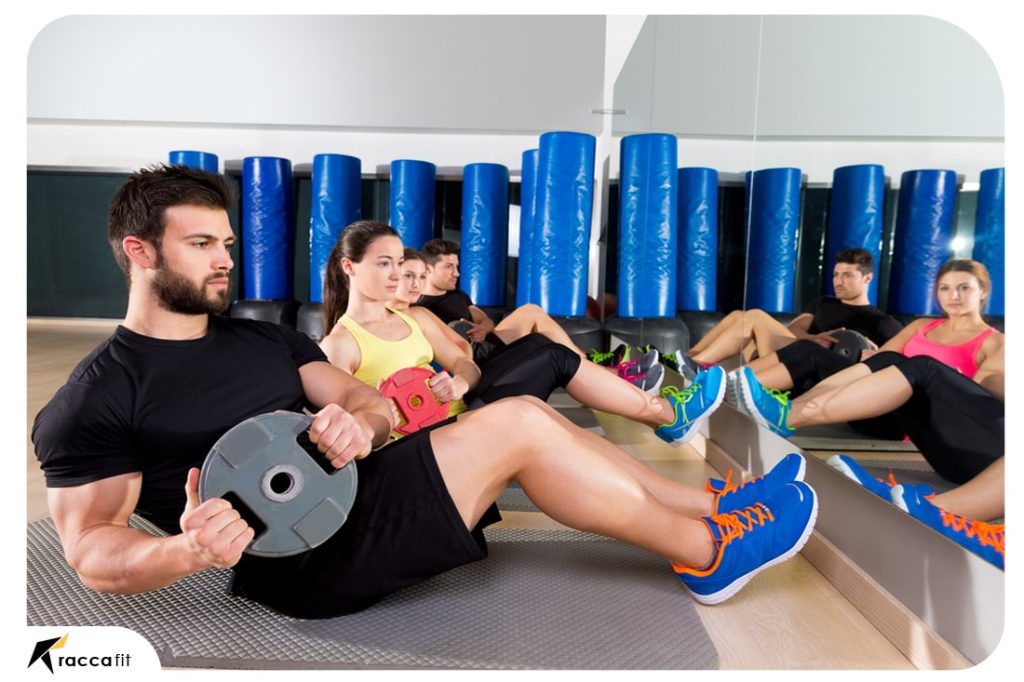Are you looking to spice up your workout routine and target those stubborn glute muscles? Look no further than the fire hydrant exercise. This simple yet effective exercise can help you strengthen and tone your glutes while engaging your core and hips. In this article, we will delve into the world of fire hydrant exercise, exploring its benefits, variations, target muscles, and much more. So, let’s get started and add some fire to your fitness routine!
In the quest for a well-rounded workout routine, it’s essential to include exercises that target different muscle groups. The fire hydrant exercise, also known as the lateral leg raise or side leg lift, is a fantastic exercise that primarily works the gluteus maximus, medius, and minimus muscles. By incorporating this exercise into your fitness regimen, you can achieve stronger glutes, improved hip stability, and enhanced athletic performance.
Regular exercise, including glute-focused movements like the fire hydrant exercise, not only helps in building stronger and shapelier glutes but also offers numerous health benefits. Engaging the glute muscles helps support the lower back, improve posture, and increase overall lower body strength. A key element to consider when striving for peak athletic performance involves developing optimal strength within your gluteal muscles. Correspondingly taking measures to fortify these muscles serves as a preventative method for avoiding common injuries associated with the lower body region – like knee and lower back discomfort.
What is a Fire Hydrant Exercise?
The fire hydrant exercise is a bodyweight exercise that mimics the motion of a dog lifting its leg to urinate on a fire hydrant (hence the name). It involves lifting your leg out to the side while maintaining a stable core and neutral spine. This particular exercise has the benefit of being adaptable to a variety of settings making it an accessible and useful inclusion in both at home and gym based workout regimens.
In addition to targeting the glute muscles, the fire hydrant exercise engages the hip abductor muscles, including the tensor fasciae latae and gluteus medius. It is worth noting that these specific muscles possess the responsibility for executing movements involving leg displacement from the body’s midline. They also serve as pivotal stabilizers for hip movement control during various activities. For those seeking to improve their hip stability focusing on strengthening these relevant muscles can prove quite beneficial. Whether you’re looking to walk or run with greater ease or find more stability in your everyday movements strengthening these muscles may be just the solution you need.
Benefits of Fire Hydrant Exercise
The fire hydrant exercise offers a multitude of benefits beyond sculpting your glutes. Here are some of the key advantages:
Stronger Glutes:
The primary focus of the fire hydrant exercise is to target and strengthen the glute muscles. Regularly incorporating this exercise into your routine can help you achieve a more toned and firm posterior.
In addition to aesthetics, strong glutes are vital for overall lower body strength and stability.In fundamental actions like squatting, deadlifting, and jumping, the muscles previously stated are significantly involved. By developing stronger glutes, you can improve your performance in various exercises and reduce the risk of lower back and knee injuries.
Improved Hip Stability:
This exercise specifically targets the hip abductor muscles, including the gluteus medius. These muscles help stabilize the pelvis and hips, providing better support and alignment during movement.
Enhanced hip stability not only aids in athletic performance but also helps prevent injuries and alleviate common issues such as lower back pain, hip impingement, and knee valgus (inward collapse of the knees). By strengthening the hip abductors through the fire hydrant exercise, you can improve your overall hip function and reduce the risk of imbalances and compensations.
Engagement of Core Muscles:
While the primary focus of the fire hydrant exercise is the glute muscles, it also engages the core muscles to stabilize the spine and maintain proper form. The transverse abdominis, obliques, and deep spinal stabilizers work synergistically to provide stability and support during the movement.
By incorporating the fire hydrant exercise into your routine, you can improve core strength and stability, leading to better posture, reduced risk of back pain, and enhanced overall functional fitness.
Versatility and Convenience:
One of the great advantages of the fire hydrant exercise is its versatility and convenience. You can perform this exercise with just your bodyweight, making it accessible for all fitness levels.
Additionally, by integrating the fire hydrant exercise into your workout regimen, you have the advantage of completing it conveniently in diverse settings such as fitness facilities, your dwelling or during travels. Its simplicity and minimal equipment requirements make it an excellent choice for those looking for effective glute activation and strengthening exercises without the need for complex machinery or heavy weights.
How to Perform a Fire Hydrant Exercise
Performing the fire hydrant exercise is relatively simple. Here’s a step-by-step guide on how to do it correctly:
- Starting Position: Start off by placing yourself onto all fours while ensuring that both hands are positioned directly underneath the respective shoulder and both knees are tucked neatly under the hips. Maintain a neutral spine and engage your core muscles.

- Lift Your Leg: Keeping your knee bent at a 90-degree angle, lift one leg out to the side, away from the midline of your body. Maintain a slow and controlled motion, avoiding any swinging or jerking movements.

- Hold and Lower: Hold the raised position for a brief pause, ensuring that your hips remain stable and your core stays engaged. Slowly lower your leg back to the starting position.
- Switch Sides: Repeat the same movement with your other leg. Continue alternating sides for the desired number of repetitions or time.
When performing the fire hydrant exercise, it’s essential to focus on using your glute muscles to lift the leg, rather than relying on momentum. This ensures that you are effectively targeting and engaging the intended muscles.
For individuals craving an increased level of difficulty while exercising, there exist several viable options. A popular approach involves implementing resistance into your routine and can be accomplished using either a resistance band above the knees or by clutching onto a dumbbell or kettlebell positioned in the knee’s crease. These variations challenge your muscles further and can help promote muscle growth and strength development.
Remember to start with a weight or resistance level that is appropriate for your fitness level and gradually increase the intensity as you progress.
Variations of the Fire Hydrant Exercise
To add variety and challenge to your workouts, here are a few variations of the fire hydrant exercise:
- Resistance Band Fire Hydrants: Place a resistance band around your thighs, just above the knees, to increase the resistance and intensity of the exercise. The band provides continuous tension throughout the movement, activating the glute muscles even more.
- Fire Hydrant with Leg Extension: After lifting your leg to the side, extend it straight out behind you. This variation engages your glutes and hamstrings simultaneously, providing a more comprehensive lower body workout.
- Weighted Fire Hydrants: Hold a dumbbell or kettlebell in the crook of your knee as you perform the exercise. The added weight increases the challenge and helps build strength and muscle mass.
Remember to choose variations that are suitable for your fitness level and goals. It’s always wise to consult with a fitness professional or trainer to ensure proper form and execution.

Muscles Targeted by Fire Hydrant Exercise
The fire hydrant exercise primarily targets the gluteus maximus, medius, and minimus muscles. The significant functionality behind our mobility lies within the gluteal muscle group located in the hip region. This group of muscles enables essential movements like hip extension, abduction and rotation that we often take for granted but are essential to maintain good health and wellbeing.
- Gluteus Maximus: Situated in the rear end region you will find a muscle known as the gluteus maximus. Its not only the largest but also quite prominent among other muscles belonging to its group. It is responsible for hip extension, which involves moving the leg backward.
- Gluteus Medius: Hip abduction involves moving our leg away from our bodys midline and is facilitated by the gluteus medius muscle positioned on the lateral side of our hip. This muscle performs an essential function in this motion. It also aids in hip stabilization during walking, running, and other weight-bearing activities.
- Gluteus Minimus: Beneath the gluteus medius lies the gluteus minimus, a relatively smaller yet significant muscle involved in hip abduction and stabilization. It works in conjunction with the gluteus medius to maintain proper hip alignment and balance.
By specifically targeting these muscles, this exercise helps strengthen and tone the glutes, contributing to a more sculpted and defined lower body.

Incorporating Fire Hydrant Exercise in Your Workout Routine
To reap the maximum benefits of the fire hydrant exercise, it’s essential to incorporate it into a well-rounded workout routine. Here are a few suggestions on how to include this exercise effectively:
- Activation and Warm-Up: Begin your lower body workout or leg day with a few sets of fire hydrant exercises. This helps activate and warm up the glute muscles, preparing them for more intense exercises.
- Superset or Circuit Training: Pair the exercise with other glute-focused exercises in a superset or circuit format. Alternating between exercises with minimal rest keeps your heart rate up and maximizes the efficiency of your workout.
- Targeted Glute Workout: Dedicate an entire workout session solely to glute exercises, with the fire hydrant exercise being a prominent component. Focusing on the glutes is made possible with this technique, and it facilitates undertaking a range of exercises that hone diverse aspects of gluteal development.
Remember to listen to your body and adjust the intensity and volume of the fire hydrant exercise according to your fitness level and goals. To ensure that your workout routine caters precisely to your individual needs it is prudent to seek the assistance of an adept fitness expert who can provide personalized advice.
Common Mistakes to Avoid
To ensure you get the most out of the exercise and reduce the risk of injury, it’s crucial to avoid these common mistakes:
- Swinging the Leg: Maintain control throughout the exercise, avoiding any swinging or jerking movements. Focus on using your glute muscles to lift the leg and keep the motion slow and controlled.
- Arching or Sagging the Back: Keep your spine in a neutral position throughout the exercise. Avoid arching or sagging the back, as this places unnecessary stress on the spine and can lead to discomfort or injury.
- Not Engaging the Core: Remember to engage your core muscles by drawing your belly button in toward your spine. This helps stabilize the spine and maintain proper form during the exercise.
- Neglecting Proper Alignment: Ensure that your hips remain level throughout the movement. Avoid tilting or rotating the hips excessively, as this can compromise the effectiveness of the exercise and place undue strain on other muscles.
By paying attention to these common mistakes and maintaining proper form, you can maximize the benefits of the exercise and reduce the risk of injury.
Tips for Maximizing the Effectiveness of Fire Hydrant Exercise
Here are some additional tips to enhance the effectiveness of your fire hydrant exercise:
- Focus on Mind-Muscle Connection: Concentrate on engaging and activating your glute muscles throughout the exercise. Visualize the movement and mentally connect with the muscles you are targeting.
- Full Range of Motion: Strive to lift your leg as high as comfortably possible while maintaining control. This ensures that you fully engage the glute muscles and maximize their activation.
- Progress Gradually: Start with bodyweight fire hydrant exercises and gradually increase the difficulty by adding resistance, such as bands or weights. Gradual progression allows your muscles to adapt and grow stronger over time.
- Include Variety: Incorporate different variations of the fire hydrant exercise to target the glute muscles from various angles and intensities. This helps prevent plateauing and keeps your workouts challenging and engaging.
- Rest and Recovery: Allow adequate rest and recovery between workouts to give your muscles time to repair and grow. It’s normal to experience muscle soreness, especially if you’re new to the exercise or have increased the intensity. This is an indication that your muscles are adapting and growing stronger. Make sure to allow enough time for rest and recovery between workouts.
By following these tips, you can optimize your exercise routine and achieve better results in terms of glute strength, tone, and overall lower body development.
Safety Precautions
It’s important to maintain personal safety when doing the fire hydrant exercise. You can do this by considering the following cautionary measures:
- Consult with a Professional: Seeking counsel from qualified physicians and fitness trainers ahead of commencing with your workouts is crucial, particularly as it pertains to existing health conditions and issues.
- Proper Form: Focus on maintaining proper form throughout the exercise to minimize the risk of injury. If you’re unsure about your form, seek guidance from a fitness professional.
- Start Slow: If you’re new to the fire hydrant exercise, start with a lower intensity and gradually increase the difficulty as your muscles adapt and become stronger. This helps prevent overexertion and reduces the risk of injury.
- Listen to Your Body: Pay attention to any discomfort or pain during the exercise. If you experience sharp or persistent pain, stop the exercise and consult with a healthcare professional.
By prioritizing safety and listening to your body, you can enjoy the benefits of the fire hydrant exercise while minimizing the risk of injuries.
Fire Hydrant Exercise and Weight Loss
While the fire hydrant exercise primarily targets and strengthens the glute muscles, it can also contribute to weight loss and body fat reduction when combined with a balanced diet and overall exercise routine.
This exercise is a compound movement that engages multiple muscle groups, including the glutes, core, and hip abductors. As a result, it increases calorie expenditure and boosts overall metabolic rate during and after the workout.
Moreover, building lean muscle mass through exercises like the fire hydrant exercise can help improve your body’s ability to burn calories and fat even at rest. Muscles are metabolically active tissue, meaning they require energy (calories) to maintain. To optimize the natural capacity of your body to burn fat consider directing your attention towards building muscle mass.
However, it’s important to note that spot reduction (targeting fat loss in a specific area) is not possible. Optimizing physical fitness levels by means of regular exercise alongside consumption of well-balanced dietary choices combined with prudent calorie management constitute important components in achieving weight reduction as well as lower body fat.
Learn More: Hip Flexor Exercises with Bands: Supercharge Your Flexibility!
Fire Hydrant Exercise for Enhanced Athletic Performance
The fire hydrant exercise offers several benefits that can enhance athletic performance across various sports and activities.
- Improved Hip Stability and Control: The fire hydrant exercise strengthens the gluteus medius and other hip abductor muscles, which are vital for hip stability and control. This improved stability translates into better balance, coordination, and control during dynamic movements like running, jumping, and changing directions.
- Increased Power and Explosiveness: Strong glute muscles contribute to greater power and explosiveness in movements that require lower body strength. This can be particularly beneficial for activities like sprinting, jumping, and sports that involve rapid changes in direction or acceleration.
- Injury Prevention: By targeting and strengthening the glute muscles, the fire hydrant exercise can help prevent injuries associated with the lower body, such as knee pain, lower back pain, and hip instability. Strong glutes provide better support and stability for the entire lower body kinetic chain, reducing the risk of imbalances and compensations that can lead to injuries.
Including the fire hydrant exercise in a complete strength and conditioning plan can assist athletes in augmenting their performance while decreasing injury odds. As such athletes might benefit from considering this exercise as an option.

Fire Hydrant Exercise for Rehabilitation and Injury Prevention
In addition to its benefits for athletic performance, the fire hydrant exercise can be a valuable component of rehabilitation and injury prevention programs.
- Hip and Knee Rehabilitation: The fire hydrant exercise targets the gluteus medius and other hip abductor muscles, which are commonly weak or underactive in individuals recovering from hip or knee injuries. By strengthening these muscles, the exercise can aid in the rehabilitation process, improve hip and knee stability, and restore proper movement mechanics.
- Low Back Pain Relief: Weak glute muscles are often associated with low back pain. The fire hydrant exercise helps strengthen the gluteus maximus, which supports the lower back and promotes better spinal alignment. By incorporating this exercise into a comprehensive rehabilitation program, individuals with low back pain can experience relief and improved functional capacity.
- Prevention of Common Injuries: The fire hydrant exercise targets the glute muscles, which play a crucial role in stabilizing the hips and pelvis. Individuals who aim to prevent lower body injuries, such as iliotibial band syndrome(ITBS) patellofemoral pain syndrome(PFPS) and anterior cruciate ligament(ACL) injuries can strengthen their muscles. This approach has been shown to be effective in mitigating the risk of such conditions.
If you have a pre-existing injury or are undergoing rehabilitation, it’s crucial to consult with a qualified healthcare professional or physical therapist to determine the suitability and proper progression of the fire hydrant exercise within your rehabilitation program.
Learn more: Bird dog exercise: Comprehensive guide and video tutorial
FAQS
- Can the fire hydrant exercise be performed by beginners? Yes, the fire hydrant exercise is suitable for beginners. It is a bodyweight exercise that can be modified to match your fitness level. Start with bodyweight-only variations and gradually increase the intensity as you become more comfortable and stronger.
- How many repetitions and sets should I do? The number of repetitions and sets can vary based on your fitness level, goals, and overall workout structure. To effectively target the muscles in both legs fitness professionals suggest aiming for two or three sets of ten to fifteen repetitions per leg. Adjust the repetitions and sets based on your individual needs and preferences.
- Can the fire hydrant exercise be done every day? Proper muscle recovery is key for achieving peak performance and avoiding injury. To ensure sufficient time for healing aim to take a break of at least one to two days between each workout. Therefore, it’s not necessary to perform the fire hydrant exercise every day. Incorporate it into your workout routine 2 to 3 times per week, allowing adequate rest between sessions.
- Can the fire hydrant exercise help with cellulite reduction? While the fire hydrant exercise can strengthen and tone the glute muscles, it is important to note that spot reduction of cellulite is not possible through exercise alone. Reducing cellulite involves a combination of overall body fat reduction, muscle toning, and proper skincare. A comprehensive approach that includes a balanced diet, regular exercise, and targeted strength training exercises like the fire hydrant exercise can contribute to overall body composition improvement.
Seeking guidance from a qualified healthcare provider or experienced fitness coach before commencing a new workout routine is crucial. Its especially vital if you have any underlying health concerns or conditions that may require additional attention.
Conclusion
The fire hydrant exercise is a versatile and effective exercise that targets the glute muscles while engaging the core and promoting hip stability. If you integrate this workout into your physical routine, you may experience compelling merits like fortifying your gluteal muscles, boosting athletic abilities, and averting unwarranted injuries.
Remember to focus on proper form, gradually progress in intensity, and listen to your body. By doing so, you can maximize the benefits of the fire hydrant exercise and achieve your fitness goals.








